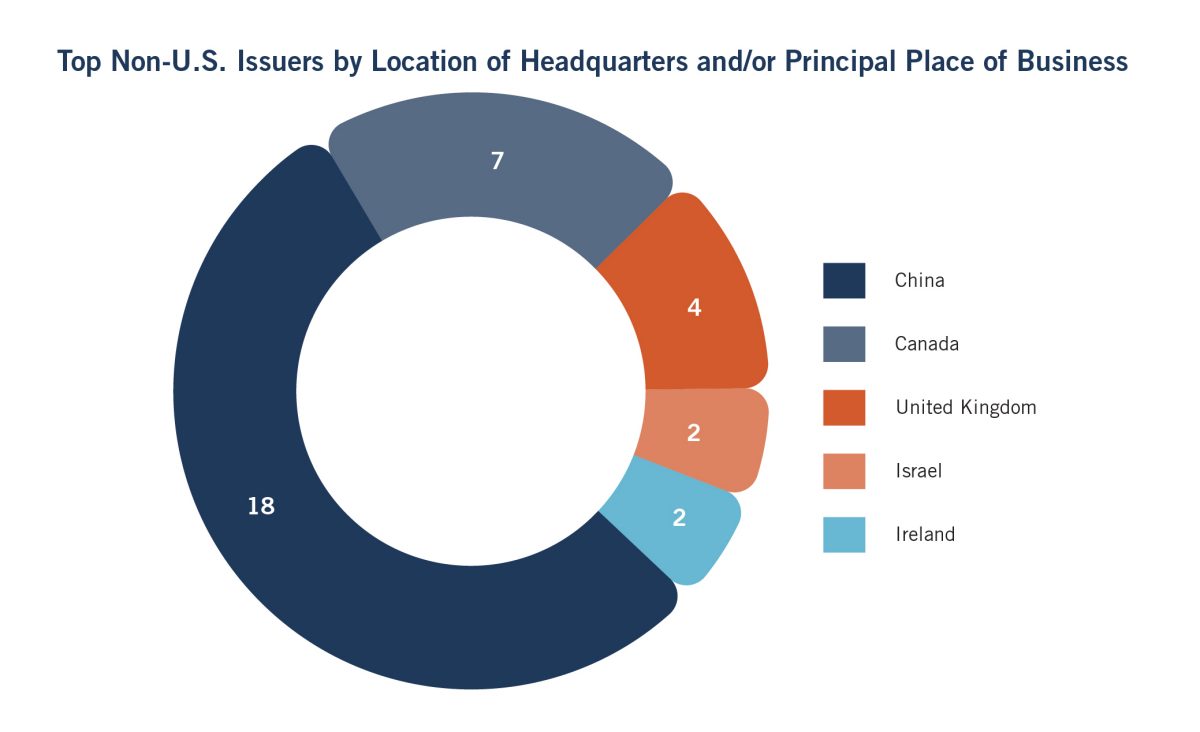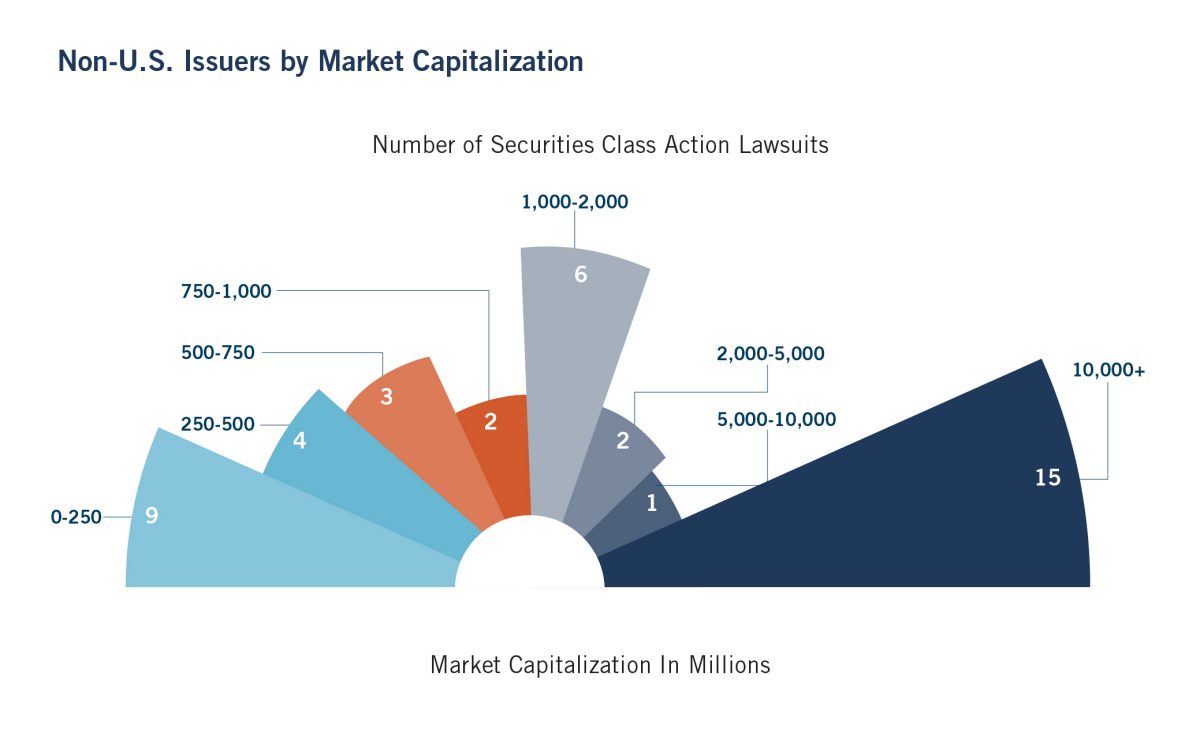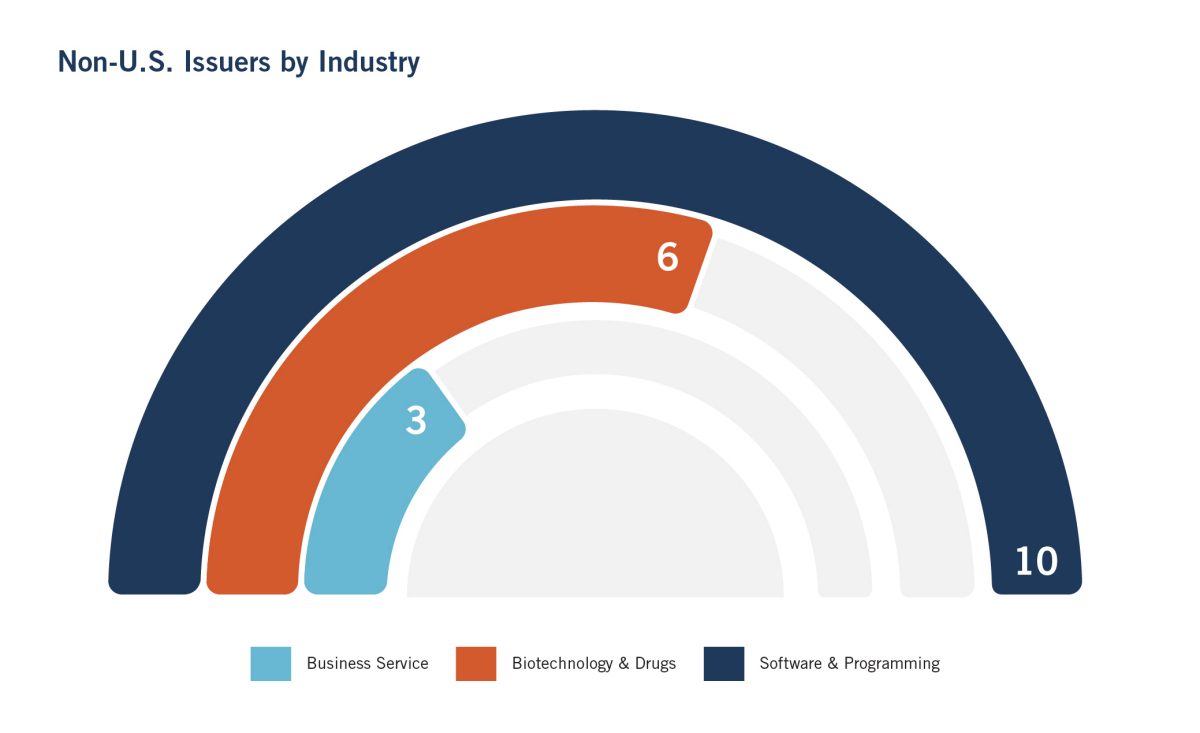Developments in U.S. Securities Fraud Class Action Lawsuits Against Non-U.S. Issuers - 2021 Summary
Overall, securities class action filings dropped in 2021, down 35 percent from 2020. This decrease is driven largely by a drop in new merger and acquisition class actions.

- An examination of the 2021 cases reveals two general trends with securities class actions brought against non-U.S. issuers. Specifically, many of the claims alleged that the defendant companies either: (i) misrepresented or omitted material information related to compliance with and/or investigations involving relevant industry regulations; or (ii) falsely overstated revenue as a result of improper accounting methods or false customer and/or user metrics.
- Continuing the trend, most non-U.S. issuer lawsuits were against companies with headquarters and/or principal place of business in China and Canada.
- About 24 percent of the cases involved alleged misrepresentations in connection with regulatory requirements and/or approvals. This includes seven cases involving alleged misrepresentations in connection with China’s regulatory requirements and/or approvals – with four involving China’s regulations on data protection and cybersecurity.
- Plaintiffs filed a total of 42 securities class action lawsuits against non-U.S. issuers in 2021, compared with 88 in 2020, which our previous report on non-U.S. issuers revealed. As compared to all securities class actions, the percentage of cases against non-U.S. issuers decreased, but only slightly, from 27 percent in 2020 to 20 percent in 2021.

Of the 42 non-U.S. issuer lawsuits filed in 2021, 18 were filed against non-U.S. issuers with headquarters and/or a principal place of business in China; seven were filed against non-U.S. issuers with a headquarters and/or principal place of business in Canada; and four were filed against non-U.S. issuers with headquarters and/or principal place of business in the United Kingdom.

The market capitalization of the non-U.S. issuers at the time at which the securities class actions were filed largely consisted of both smaller market cap companies (nine of 42) under US$250 million and larger market cap companies (16 of 42) over US$5 billion.

While the suits cover a diverse range of industries, the largest portion involved software & programming and biotechnology & drugs companies.



